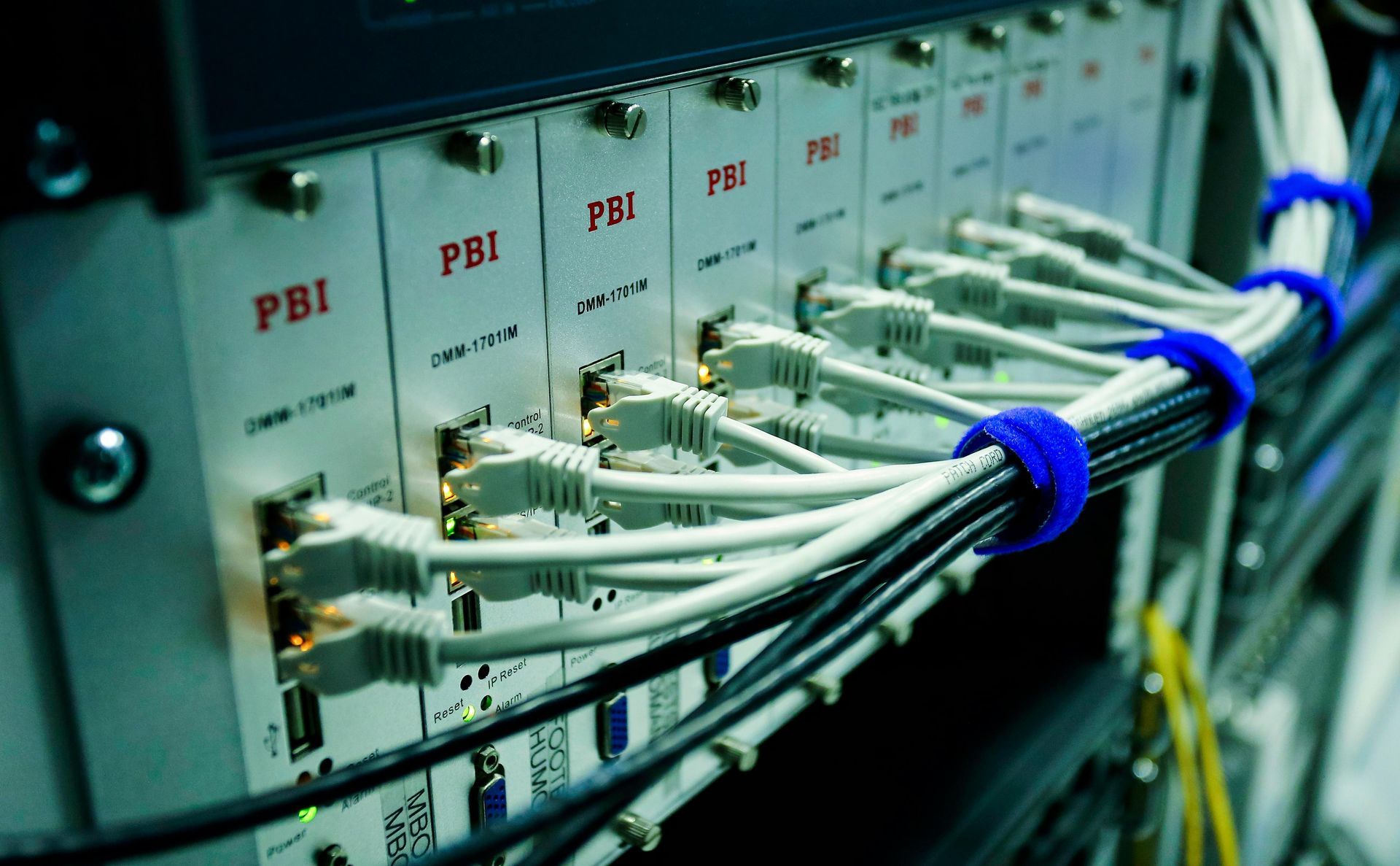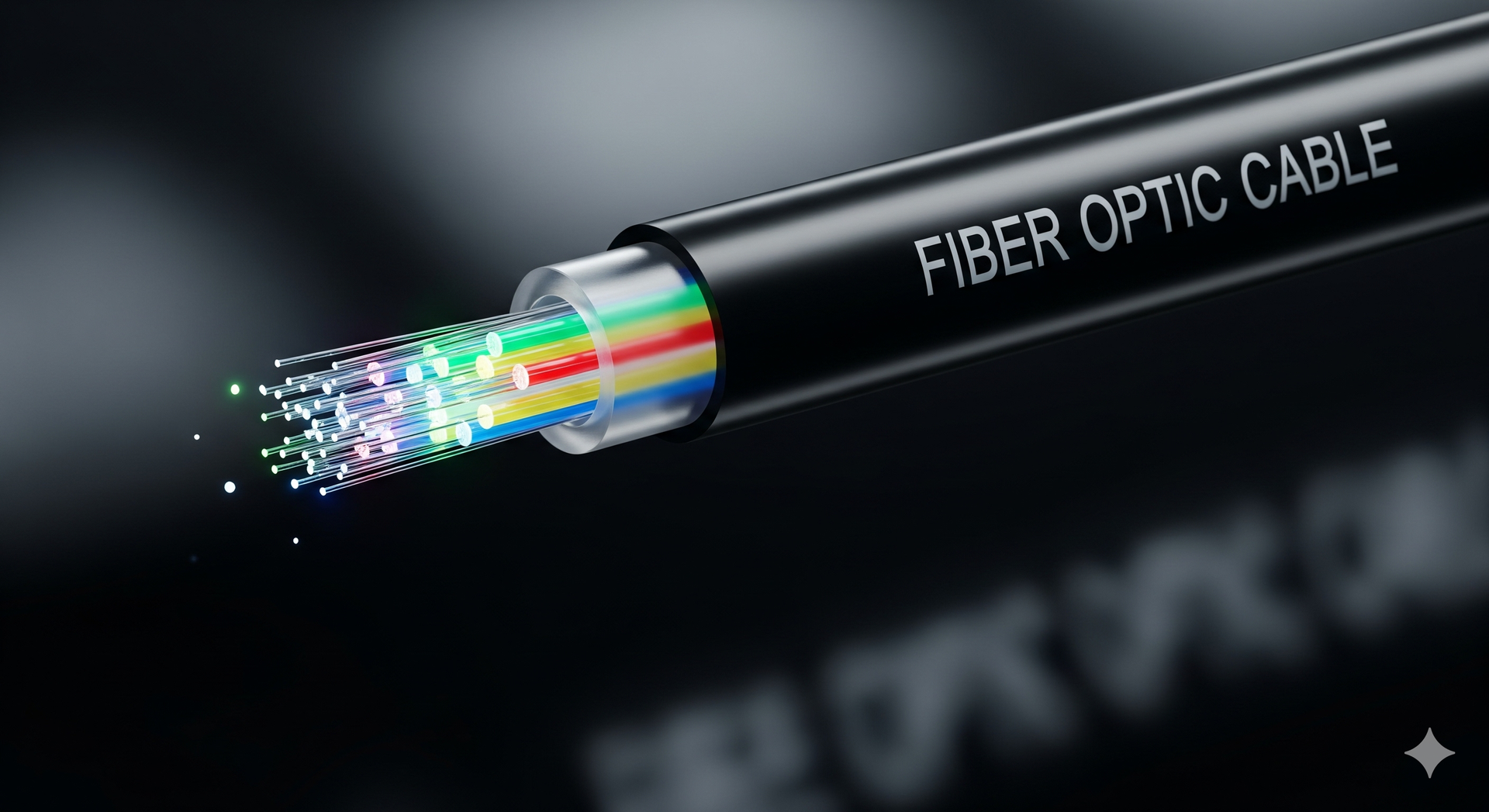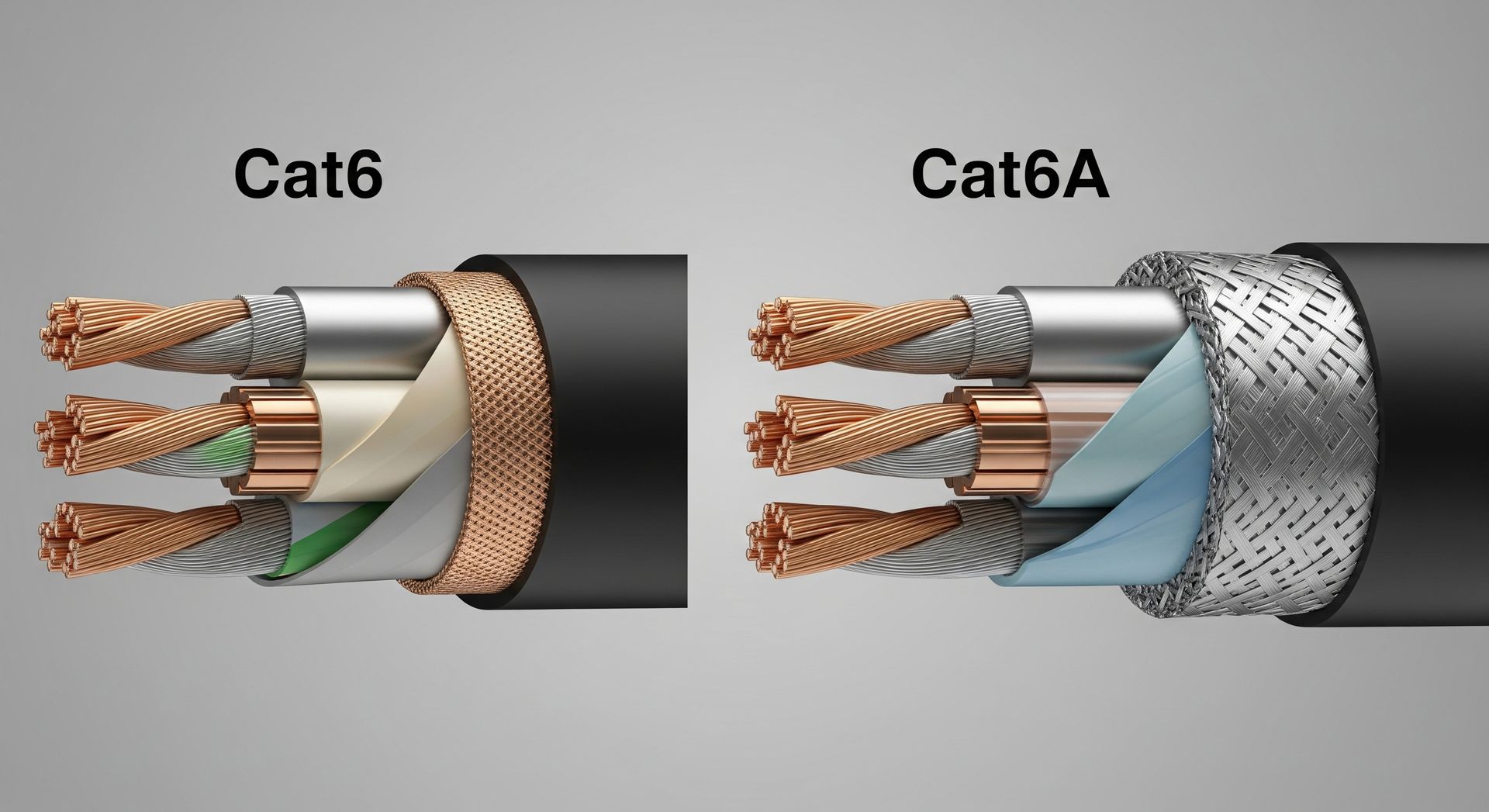Structured Cabling Guide: From Chaos to Clarity
Nearly every business relies on a complex web of devices, networks, and systems to stay connected and productive. Whether it's for phone systems, internet access, video conferencing, or cloud computing, the need for a reliable and organized communications infrastructure has never been more critical. This is where structured cabling comes in. Structured cabling is the foundation of a company’s communication network. It provides an organized, standardized method of wiring that supports all data, voice, video, and management systems. It helps future-proof your business, making it easier to expand and upgrade without major disruptions or unnecessary costs. We’ll explain what structured cabling is, explore its key components, and break down why it’s such a valuable investment for businesses of all sizes and industries.
Key Takeaways
- Structured cabling is a standardized system for organizing and connecting communication hardware within a building or campus.
- It simplifies network management and helps reduce downtime, improve performance, and lower maintenance costs.
- The system supports multiple hardware uses and is designed to accommodate future upgrades and expansions.
- Investing in structured cabling enhances workplace efficiency and provides a scalable, long-term infrastructure solution.
- Professional installation is essential for ensuring compliance with industry standards and optimizing network performance.
- Structured cabling plays a key role in modern smart buildings, supporting everything from security systems to IoT devices.
What Is Structured Cabling?
Structured cabling refers to a complete system of cabling and associated hardware used to provide a comprehensive telecommunications infrastructure. This infrastructure serves a wide range of uses, such as providing telephone service or transmitting data through a computer network.
Rather than using a messy and disorganized setup with cables running all over the place, structured cabling uses a planned layout based on standard design principles. It separates infrastructure into subsystems and follows a consistent approach to cable management, making it much easier to manage, maintain, and upgrade over time. The goal of structured cabling is to create a flexible and scalable system that allows for the smooth operation of all communication services in a building or across a campus. If you’re looking to install or upgrade your system, professional cable installation ensures long-term performance and future readiness.
Key Components of Structured Cabling
Structured cabling systems consist of several standardized components:
1. Entrance Facilities
This includes the cables and equipment needed to connect your building to the external service provider. It’s where the service from your internet provider, telephone company, or other utilities enters your facility.
2. Equipment Room
A centralized room that houses equipment such as servers, switches, routers, and other network hardware. This room is the hub of your network infrastructure.
3. Backbone Cabling
Also known as vertical cabling, this connects different equipment rooms and telecom closets within the building. It carries the bulk of the data traffic between different parts of the network and often includes fiber optic installation for high-speed performance.
4. Telecommunications Room or Closet
A smaller room or space within a building that houses networking equipment like patch panels, network switches, and cabling termination points. It connects to the backbone cabling and distributes connections to end users.
5. Horizontal Cabling
This is the cabling that connects the telecommunications room to individual workstations, computers, or devices on the same floor. It usually runs through the ceiling or flooring systems.
6. Work Area Components
This includes cables and connectors that allow users to connect their devices to the network at their desks or workstations.
Benefits of Structured Cabling
Now that we’ve covered the basics, let’s explore why structured cabling is so important for your business.
1. Better Organization and Simplicity
Structured cabling creates a clean and organized network layout. This simplifies troubleshooting, maintenance, and upgrades. Instead of dealing with a tangled mess of wires, your IT team can easily identify and address issues.
2. Improved Network Performance
High-quality cabling and consistent installation reduce interference and data transmission errors. This ensures faster and more reliable connectivity, which is critical for operations that rely on uninterrupted internet access.
3. Scalability for Future Growth
As your business grows and your tech needs change, a structured cabling system makes it easy to add or move devices without disrupting the entire network. Whether you're expanding to a new floor or adding more employees, structured cabling supports seamless upgrades.
4. Reduced Downtime
A well-organized cabling system reduces the risk of outages and network failures. When issues do arise, they can be diagnosed and fixed more quickly, minimizing downtime and its associated costs.
5. Cost Efficiency Over Time
While structured cabling may require a higher upfront investment, it saves money in the long run by reducing maintenance costs, lowering energy use, and extending the life of your hardware and equipment.
6. Enhanced Security and Safety
Structured cabling supports secure network environments, particularly when combined with access controls and firewalls. Physically organized cabling also reduces the risk of fire hazards and accidents in the workplace.
Structured Cabling vs. Point-to-Point Cabling
Before structured cabling became the standard, many businesses used point-to-point cabling systems. In these setups, a cable runs directly from one device to another, creating a “spaghetti-like” mess over time.
Here’s how structured cabling compares:
| Feature | Structured Cabling | Point-to-Point Cabling |
|---|---|---|
| Organization | Highly organized | Often messy and tangled |
| Scalability | Easy to expand or reconfigure | Difficult to scale |
| Downtime | Minimal due to fast troubleshooting | Harder to fix issues, more downtime |
| Cost | Higher initial cost, lower over time | Low initial cost, higher maintenance |
| Performance | Consistent and high-quality | Variable, depends on cable setup |
Who Needs Structured Cabling?
Structured cabling is a smart investment for:
- Offices and commercial buildings: To support communication systems, workstations, and servers.
- Warehouses and industrial facilities: For automation systems, security cameras, and IoT devices.
- Healthcare environments: To ensure consistent data flow for medical equipment and records.
- Educational institutions: To connect classrooms, administrative offices, and labs.
- Retail stores: For POS systems, surveillance, and inventory tracking.
- Hotels and hospitality businesses: To support guest Wi-Fi, front desk systems, and internal communications.
- High-rise and apartment buildings: To handle complex tenant and building-wide communications.
- Retail strip malls and convenience stores: To streamline connectivity between multiple tenants and business units.
- Auto dealerships: For service bays, showrooms, and customer support areas.
- Manufacturing plants and factories: For data-heavy machinery and production systems.
- Distribution centers and logistics hubs: To enable inventory tracking, automation, and communication systems.
- Construction and development sites: For job site connectivity, planning offices, and temporary infrastructure.
Even small businesses can benefit, especially if they plan to grow or want to avoid frequent connectivity issues.
Choosing the Right Installer
To get the full benefit of structured cabling, professional installation is key. Certified installers follow industry standards like those from TIA/EIA and BICSI, ensuring your system is built to last and perform reliably.
Look for installers who offer:
- Site assessments and needs analysis
- Custom design plans for your facility
- Certified cables and components
- Testing and certification of all installed cabling
- Ongoing support and maintenance options
Frequently Asked Questions
How long does structured cabling last?
Structured cabling systems are designed to last 10 to 20 years or more. High-quality installation and materials can extend this lifespan even further.
Can structured cabling support wireless networks?
Yes. Structured cabling provides the wired backbone that supports wireless access points. A reliable cabling system ensures strong and consistent wireless performance throughout your facility.
Is structured cabling only for large businesses?
Not at all. Even small businesses can benefit from structured cabling. It provides a stable and scalable foundation that supports future growth and helps avoid costly upgrades later.
What types of cables are used in structured cabling?
Common types include Cat5e, Cat6, Cat6a, Cat7, and fiber optic cables. The choice depends on your bandwidth needs, distance, and environment.
How much does structured cabling cost?
Costs vary based on building size, number of workstations, cable type, and complexity of the installation. While it may involve a higher upfront investment, it usually pays off in efficiency and reduced maintenance.
Final Thoughts
Structured cabling is more than just an IT upgrade. It’s a strategic investment in your business’s communication infrastructure. It brings order to chaos, simplifies daily operations, and provides the flexibility to grow and adapt as your company evolves.
By installing a structured cabling system, you’re not just improving connectivity. You’re boosting productivity, increasing reliability, and positioning your business for long-term success. Whether you’re running a small office or managing a large enterprise, structured cabling is the invisible backbone that keeps everything running smoothly.
Are you planning on a network upgrade or moving to a new space?
Share this article












